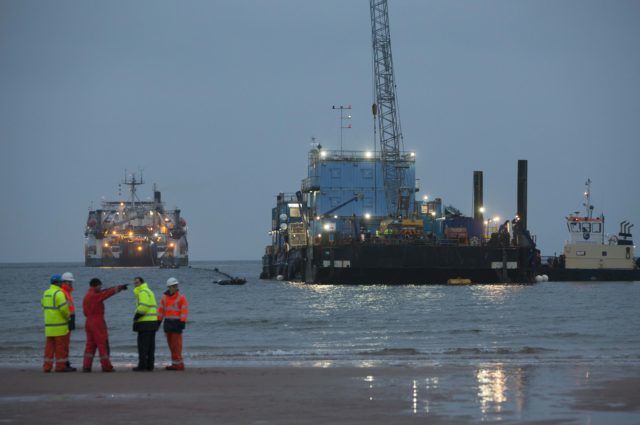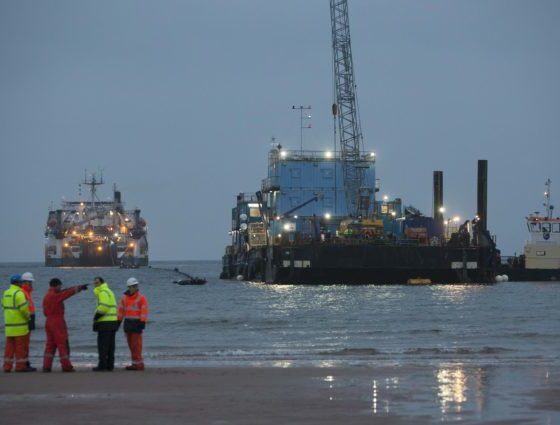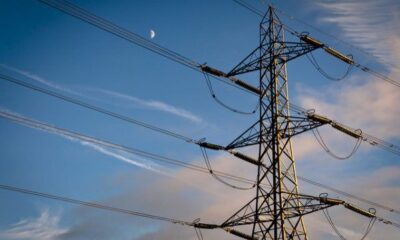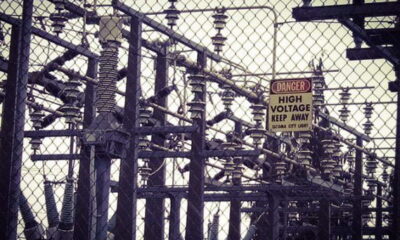

News
Power Cable Engineers Discover WW1 Submarine Sunk by ‘Sea Monster’
One of WW1 naval mysteries one step closer to being solved after a £1 billion subsea cable laying project, connecting England and Scotland, results in history discovery.
Marine engineers working on the Western Link project, a joint venture between ScottishPower and National Grid which will take renewable power from Scotland to homes and businesses in England and Wales, have found the wreck of a German U-boat while surveying the sea bed off the coast of Wigtownshire.
Remarkable sonar images show the 100-year-old vessel largely intact and attempts to identify the wreck have led experts to conclude that it may be that of UB-85, a submarine that, according to folklore, was attacked by a sea monster while prowling Scotland’s coastline towards the end of World War I.
Official reports from the time tell how UB-85 was caught on the surface during the day of April 30 1918 and sunk by a British patrol boat – the HMS Coreopsis, which was built on the Clyde near Glasgow by renowned shipbuilders Barclay Curle & Co, of Elderslie Dockyard.
The German submarine crew surrendered without resistance to the surprise of their British counterparts.
However, another story has long been associated with the U-boat and its commander, Captain Krech. An old sea tale, widely shared online, recounts that the Captain, when questioned about why he had been cruising on the surface, told how the sub had been recharging batteries at night when a “strange beast” rose from the sea. He is said to have described a “beast” with “large eyes, set in a horny sort of skull. It had a small head, but with teeth that could be seen glistening in the moonlight”.
The animal was so large that it is claimed it forced the U-boat to list greatly to starboard. “Every man on watch began firing a sidearm at the beast,” Krech is believed to have said, telling how the battle continued until the animal dropped back into the sea. In the struggle, though, the forward deck plating had been damaged and the sub could no longer submerge. “That is why you were able to catch us on the surface,” the Captain is said to have concluded.
Innes McCartney is an historian and nautical archaeologist who has been working with the Western Link team in a bid to identify the wreck and concludes that the mystery of UB-85 could be one step closer to being solved.
He said: “In the waters of the Irish Sea there are at least 12 British and German submarines known to have sunk and potentially others whose actual sinking area remains a mystery. The features of this particular wreck, which is largely intact, confirm it as a UBIII-Class submarine, of which we know of two which were lost in the area – the more famous UB-85 and its sister boat UB-82.
“While I can conclude that this wreck is likely to be one or the other, they would be practically impossible to tell apart, aside from the numbers painted on them in service, now obviously long gone.
“Unless a diver can find a shipyard stamp, we cannot say definitively but yes, we’re certainly closer to solving the so-called mystery of UB-85 and the reason behind it’s sinking – whether common mechanical failure or something that is less easily explained.”
And although Dr McCartney favours an error with the submarine’s schematics, an expert of a different kind has another theory.
Gary Campbell, keeper of the Official Sightings Register of the Loch Ness Monster, said: “It is entirely feasible that some large sea creature disabled the submarine. The WWI report from the Captain of the British ship HMS Hilary a year earlier makes it clear that sea farers at that time were well aware of large sea ‘monsters’ that could be harmful to their ships.
“History has shown that there have been consistent reports of large ‘monsters’ not just in lakes and lochs like Loch Ness but out in open waters as well. For many years the giant squid was known as the fearsome Kraken and given the size of the oceans, it wouldn’t be a surprise if many large species were still to be discovered.
“The area of sea where the attack took place has a history of sea monster sightings – they have ranged from the north coast of Wales to Liverpool bay. What the German Captain said could well be true.
“It’s great to see how Nessie’s saltwater cousin clearly got involved in helping with the war effort – she even managed to do the damage without anyone being killed.”
Peter Roper, of Western Link partner ScottishPower, said: “The images we get back from the subsea scans are incredibly detailed, but we obviously need to be aware of what lies beneath before we can start laying a power cable. In all the years I have been building power lines, I can say that this is the most extraordinary discovery.
“The story behind the submarine is also fascinating. I am probably on the side of the historians who believe that the capture of the vessel was more straightforward than a sea monster attack. ‘A sea monster attacked my submarine’ is maybe one of the most fanciful excuses of all time. Thankfully we have had no monster-related health and safety incidents on the project yet.”
Graham Edwards, of Western Link Partner National Grid, said: “The Western Link is a very significant project for the UK and has required careful planning in all aspects, but particularly in the laying of high voltage cables in the sea, where we are working hard to minimise our impact on the environment. During construction, we take great care over archaeology, whether on land or at sea, and it’s always exciting to record a significant find and help to shed new light on our history – especially one with such a good tale involved!”
The subsea marine cable is around 385km long, the longest of its type in the world, and when in place it will run from Ardneil Bay in North Ayrshire in Scotland to the Wirral peninsula in north west England.
The submarine wreck is approximately 120m north-west of the centre of the planned cable route, off the Stranraer coast. The survey shows the vessel is largely intact and is approximately 45m long, with debris spilling out of the stern end.


 Environment9 months ago
Environment9 months agoAre Polymer Banknotes: an Eco-Friendly Trend or a Groundswell?

 Environment11 months ago
Environment11 months agoEco-Friendly Home Improvements: Top 7 Upgrades for 2025

 Features8 months ago
Features8 months agoEco-Friendly Cryptocurrencies: Sustainable Investment Choices

 Features10 months ago
Features10 months agoEco-Friendly Crypto Traders Must Find the Right Exchange



























